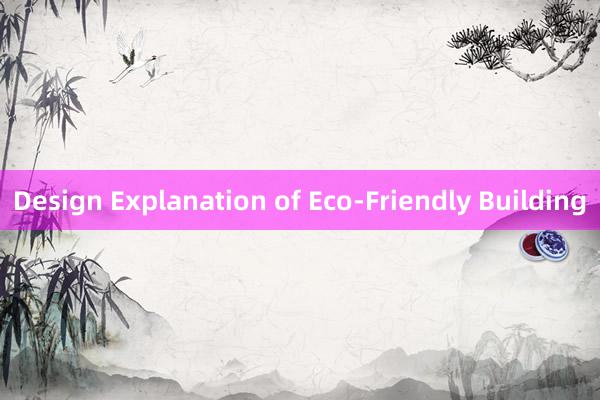时间:2025-05-05 10:10

**Design Explanation of Eco-Friendly Building**
The concept of eco-friendly building design has gained significant attention in recent years as the world grapples with environmental challenges such as climate change, resource depletion, and pollution. An eco-friendly building is designed to minimize its ecological footprint while maximizing energy efficiency, sustainability, and occupant well-being. This article explores the key principles and strategies behind the design of an environmentally responsible structure.
At the core of eco-friendly building design lies the principle of sustainability. Architects and builders prioritize the use of renewable materials that are locally sourced and have minimal environmental impact. For instance, bamboo, recycled steel, and reclaimed wood are often used due to their low carbon footprint and durability. Additionally, sustainable practices extend to the construction process itself, where waste reduction, recycling,如东雯艺艺术培训有限公司 and efficient resource management are emphasized.
Energy efficiency is another critical aspect of eco-friendly building design. Passive solar design techniques are commonly employed to harness natural sunlight for heating and lighting, 万全县哈福电梯设备专业合作社 reducing reliance on artificial sources. Insulation is optimized to maintain comfortable indoor temperatures year-round, 台州忠大忠亿塑模科技有限公司 minimizing the need for heating and cooling systems. Furthermore, renewable energy technologies like solar panels and wind turbines are integrated into the building's infrastructure to generate clean electricity on-site.
Water conservation is equally important in eco-friendly buildings. Rainwater harvesting systems collect and store precipitation for irrigation, flushing toilets,固镇房产信息网-固镇房产网-固镇二手房 or even cleaning purposes. Low-flow fixtures and greywater recycling systems further reduce water consumption. These measures not only conserve precious resources but also lower utility costs for occupants.
Indoor air quality is another priority in sustainable building design. Non-toxic, low-VOC (volatile organic compound) materials are selected for finishes and furnishings to ensure healthy living conditions. Natural ventilation strategies, such as strategically placed windows and skylights, promote airflow and reduce the need for mechanical ventilation. Green spaces, both indoors and outdoors, contribute to improved air quality by filtering pollutants and increasing oxygen levels.
Lastly, eco-friendly buildings are designed with flexibility and adaptability in mind. Modular construction techniques allow for easy modifications, ensuring that structures can evolve with changing needs over time. This approach reduces the likelihood of demolition and reconstruction, which can be wasteful and harmful to the environment.
淮安五星商贸有限公司In conclusion, the design of an eco-friendly building is a holistic endeavor that considers every aspect of construction and operation. By integrating sustainable materials, energy-efficient systems固镇房产信息网-固镇房产网-固镇二手房, water conservation methods, and healthy indoor environments, these buildings contribute to a more sustainable future. As awareness grows about the importance of environmental stewardship, eco-friendly building design will undoubtedly play a pivotal role in shaping the cities and communities of tomorrow.